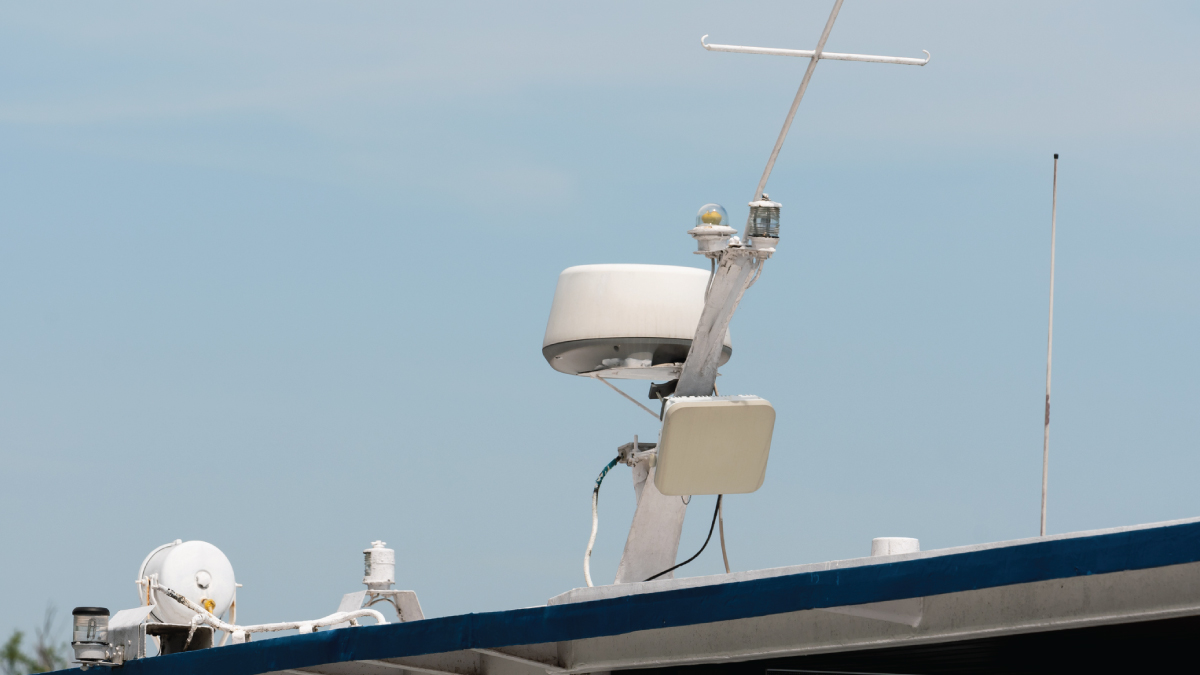
New multi-band antenna technology could redefine satcom by making connectivity as seamless and automated as a terrestrial cellular network. Ryan Stevenson, senior vice president and chief scientist at Kymeta, explained how ESAs can roam across different bands and different orbits, and what this technology means for the satellite industry. Listen to the podcast episode, or read our top four takeaways below.
Takeaway 1: Multi-band antenna technology creates multi-orbit, multi-band connectivity.
“The ability to have multi-band ESA has been a challenge for a long time,” Stevenson said. “What we’ve been able to do with this breakthrough is combine Ka and Ku ESA functionality into one physical aperture.”
The ability to operate out of a single terminal is key for many use cases, such as an aircraft carrier, which would typically require a Ku receiver array, a Ku transmitter array, a Ka receiver array and a Ka transmitter array in order to have full duplex comms. In other cases, such as land mobile platforms, there simply isn’t sufficient room or power to support this set-up. But if all of this technology is assembled into a single compact antenna, then multi-orbit, multi-band connectivity becomes possible.
Additionally, this wide-ranging connectivity is managed via software. “Once we have the multiple bands integrated—that’s obviously done in the hardware—then actually controlling the orbit we’re working on is all in the software flexibility of the antenna,” Stevenson said.
Takeaway 2: Multi-band antennas reduce logistics footprints and improve resiliency.
For an organization like the Space Force, “network resiliency is a huge deal,” Stevenson said. “This means very high availability network connectivity, with the ability to do what they call PACE planning.” PACE, or primary alternate contingents and emergency communications paths, outlines alternative communication methods to be followed in case of contingencies. “This ability to interoperate across bands and orbits really fills that requirement for the military across a variety of platforms,” Stevenson said.
Current communications networks also require the DoD and USSF to keep a massive amount of antenna and receiver technology on hand. A multi-band antenna could help ease that logistics footprint. “It allows you to just eliminate hardware,” Stevenson said. “Now you have one terminal that can operate across different constellations and different bands, and you don’t need to carry all this other equipment.”
Software-defined capability also allows a complex organization like USSF to streamline their operations. “Organizations like DIFI that are trying to standardize and remove a lot of that hardware-based implementation and replace it with more software-based implementation,” Stevenson said. “This technology will facilitate that move.”
Takeaway 3: In the current satellite market, standardization is favorable.
“This technology is going to help drive the push towards standardization,” Stevenson said. If an end user can have guaranteed interoperability across a range of networks, a wide range of business use cases become possible. “What does it mean for my business, if I can interoperate now across all these different networks?” Stevenson asked in a hypothetical.
For many owners and operators, standardization and widespread connectivity will help reduce costs in business models across many different industries, such as in-flight connectivity in aerospace. It will also change how people think about satcom.
With satcom becoming inundated with large LEO constellations and multi-orbit schemes, the ability to interoperate across multiple technologies will be advantageous. With players like OneWeb, Intelsat, SES, Starlink and Kuiper launching across LEO, MEO and GEO, “you have the potential for this hybrid network, that’s going to need to bridge between Ku LEO, Ku GEO and Ku MEO.”
“Having one user terminal that could interoperate across that kind of hybrid network really facilitates this move in the industry towards consolidation and hybridization,” Stevenson said, including making truly multi-band and multi-orbit constellations feasible.
Takeaway 4: Edge AI will require ubiquitous connectivity.
“Edge AI in particular is dependent upon ubiquitous computing, and ubiquitous computing really hinges on ubiquitous connectivity,” Stevenson said.
But to have ubiquitous connectivity across satellite networks, an operator will need to be to link to many different types of orbits and bandwidths. “This is talked a lot about in 6G,” Stevenson explained. “Having simultaneous links on Ku and Ka, and the ability to switch orbits, MEO, LEO, GEO. It really enables this AI-based network management approach.”
This AI-based network management will enable an operator to dynamically balance and load the network from a single user terminal, accounting for factors like traffic and weather. “This hybrid capability of interoperating across Ka, Ku, GEO, MEO, LEO—it really becomes essential to providing that level of connectivity that’s required to accelerate edge AI and other AI applications,” Stevenson said.
For more on system polarization, metamaterials and aerospace connectivity, listen to the full podcast episode.
Explore More:
Podcast: Interoperability, Cloud Services and Satellite-Enabled Network Resilience
Flat-Panel Antennas May Prove to be a Game-Changer for Multi-Orbit Networking
A Digital Path Forward for WGS
